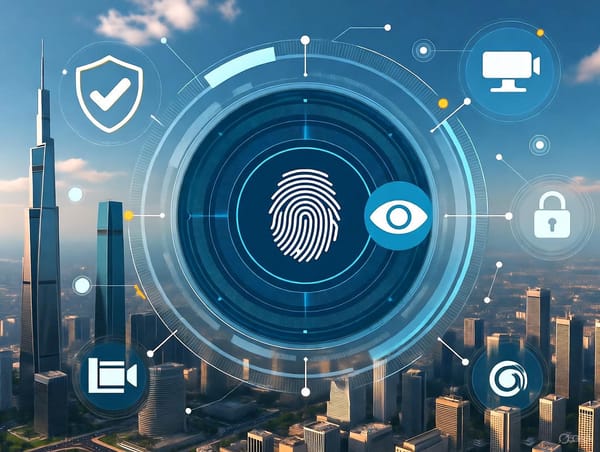Harnessing Diversity
By fostering open communication, celebrating unique strengths, and building an inclusive culture, diverse teams can transform differences into unstoppable momentum for creativity and success.

Diversity isn’t just a buzzword—it’s a catalyst for innovation, resilience, and success. When people with varied skills, backgrounds, and perspectives unite, they generate ideas that transform challenges into opportunities. But diversity alone isn’t enough; it requires intentional effort to unlock its potential. This article explores why diverse teams thrive and offers practical strategies to foster creativity, enhance problem-solving, and build unity.
The Power of Diverse Perspectives
Diversity goes beyond demographics—it’s about the unique thoughts, experiences, and approaches each person brings. A team with similar mindsets may move fast but risks missing blind spots or settling for average solutions. Diverse teams, however, view problems from multiple angles, uncovering innovative possibilities. For example, in product development, an engineer’s focus on functionality, a designer’s eye for aesthetics, and a marketer’s insight into customer needs can spark breakthroughs when combined. McKinsey’s 2020 report confirms this: companies with diverse leadership are 25% more likely to outperform financially due to better decision-making and creativity.
Why Diversity Fuels Creativity
Creativity thrives when different ideas collide. A data-driven analyst and an intuitive strategist might initially clash, but blending their approaches—using data to inform intuition or vice versa—leads to richer solutions. Cultural backgrounds, life experiences, and personality types further amplify this. For instance, a team member from a different cultural context might suggest novel ways to reach underserved markets, while an introvert’s attention to detail can refine a project’s execution. The key is creating space for these differences to shine without forcing conformity.
Overcoming Challenges
Diverse teams can face friction from miscommunication, clashing priorities, or unconscious biases. Without care, differences can divide rather than unite. Common pitfalls include forming cliques with “like-minded” colleagues or overlooking quieter voices, which stifles inclusivity. These challenges are manageable with intentional strategies, like fostering open dialogue and addressing biases through structured tools, such as anonymous feedback or bias-awareness training.
Strategies for Harnessing Diversity
Turn diversity into a superpower with these practical steps:
- Foster Open Communication
Encourage fearless idea-sharing by setting clear meeting rules—e.g., ensuring everyone speaks or using tools like anonymous polls for sensitive topics. For remote/hybrid teams, leverage video calls and collaboration platforms to maintain connection. Practice active listening: acknowledge contributions and ask clarifying questions to show genuine curiosity. - Define Shared Goals
A common purpose unites diverse perspectives. For example, a software team might focus on “delivering a seamless user experience” to align technical and creative efforts. Clear, shared goals ensure differences become tools for success, not sources of conflict. - Celebrate Unique Strengths
Each team member brings distinct talents—e.g., big-picture strategy or meticulous execution. Assign roles that leverage these strengths and encourage cross-learning. Pair complementary skill sets, like a visionary with a planner, to spark innovation. - Encourage Constructive Conflict
Healthy debate prevents groupthink and refines ideas. Foster a culture where challenging assumptions is welcome, but keep it productive by focusing on ideas, not people. Use frameworks like “disagree and commit” to debate thoroughly, then align and move forward. - Invest in Team Building
Trust binds diverse teams. Build relationships through virtual coffee chats, in-person workshops, or team-building activities. Understanding colleagues as individuals fosters collaboration, especially in remote settings where personal connections can weaken.
Building an Inclusive Culture
Inclusion turns diversity into action by ensuring every voice is heard and valued. Leaders set the tone by modeling inclusive behavior—acknowledging biases, seeking diverse input, and addressing exclusion promptly. Peers play a role, too, by amplifying quieter voices and giving credit where due. In remote/hybrid settings, use tools like shared docs or regular check-ins to ensure inclusivity across distances. Over time, these actions create a culture where differences are a strength, not a barrier.
Real-World Examples
Pixar’s diverse teams of animators, writers, and technologists use “plussing”—building on each other’s ideas—to create globally resonant films. For example, Coco blended cultural insights from Mexican team members with technical expertise to craft an authentic, visually stunning story. Similarly, NASA’s mission teams combine scientists, engineers, and communicators from varied backgrounds to solve complex challenges, like landing rovers on Mars. These examples show diversity’s power when channeled collaboratively.
Measuring the Impact
Track diversity’s success through metrics like increased idea generation (e.g., number of new proposals), faster problem-solving (e.g., time to resolve issues), or higher engagement (e.g., employee survey scores). Qualitative feedback, such as team members feeling heard, is equally vital. Project outcomes, like improved customer satisfaction or product innovation, also reflect diversity’s value.
The Long-Term Benefits
Diverse teams build resilience for future challenges, from market shifts to new technologies. They also attract top talent, as people seek workplaces where their uniqueness is celebrated. This creates a cycle of stronger teams, better outcomes, and a reputation for excellence.
Take Action Now
Diversity is a gift, but it demands effort to shine. By fostering open communication, celebrating strengths, and building an inclusive culture, teams can transform differences into unstoppable momentum. Start today: audit your team’s inclusivity, set one shared goal, or host a team-building session. The result? A unified team capable of tackling any challenge with creativity and confidence—building not just better teams, but a better world, one collaboration at a time.





